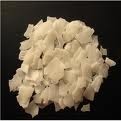Where did chocolate originate???
Chocolate has been around since the time of the Mayans and Aztecs, over three thousand years ago. The Mayans and Aztecs used to harvest the cacao pods from cacao trees. They would then ferment these pods. This was prepared into a chocolate drink.
This was actually not a sweet drink, was extremely bitter in taste. Unsurprising the name literally translated to "bitter water". Considering the intense and bitter flavor of this drink. The drink was regularly used during religious ceremonies, and cocoa beans would be used to haggle for other products.
Prior to fermentation, the ripe cacao fruits (known as pods) are carefully cut from the the tree. The harvested pods are taken to a central location, where the fermentation will take place. Some growers ferment their own beans in relatively small heaps on the floor of the plantation, while others take their pods to a co-op for larger-scale box fermentation. But regardless of the scale of the operation, the fermentation process is essentially the same.
When the pods have been gathered at the fermentary, they are broken open, and the beans are scooped out.
For a long as a cacao pod remains intact, it is sterile, meaning that it contains no yeast or bacteria. However, during the pod-breaking and been-scooping stage, the pulp is inoculated with wild yeasts and bacteria. Scientists believe that the bulk of these microorganisms are transferred from the skins of the pods to the beans, via the bean-scooper' hands
In the first stage of fermentation, the wild yeasts rapidly multiply in the sweet, fruity pulp converting the pulp's sugar into alcohol. This initial phase takes places in the absence of oxygen. Hence, it is known as anaerobic fermentation. The yeast population peaks within 24 hours.
After the yeasts have done their work, bacteria begin to take over the fermentation process, converting the alcohol into acid. This acid slowly penetrates the been.
The bacterial phase of fermentation takes place in the presence of oxygen. Hence it is known as aerobic fermentation. This phase requires a significant amount of oxygen, so the beans are typically turned at least twice during the fermentation process, in order to introduce oxygen into the heap, and to ensure that all of the beans are fermented evenly. Typically, the beans are turned at about 48 and 72 hours after fermentation
begins.
The bacteria population peaks roughly 72 hours after fermentation first begins, and decreases rapidly over the following 72 hours. Hence, the entire fermentation process typically takes about 144 hours (six days).













